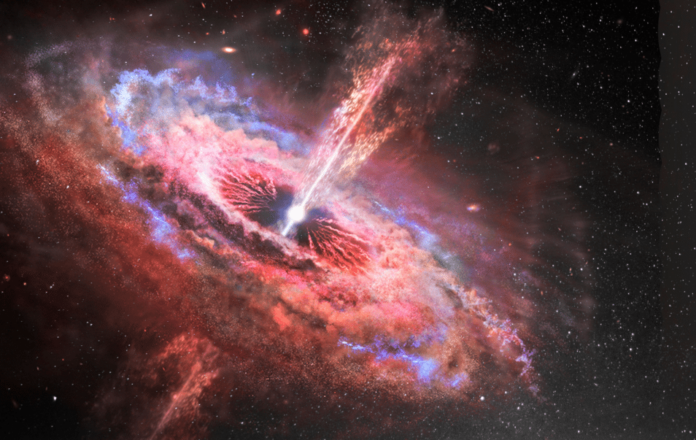
What came first? Black holes or galaxies?
What came first? Black holes or galaxies? Scientists thought they had it all figured out, but new information gathered from the James Webb Space Telescope is now turning everything upside down.
It is believed that the first black holes only emerged when the first supermassive stars approached the end of their lives. These stars would have burned through their fuel quickly, after which they collapsed and transformed into a black hole. With this in mind, it is more logical to assume that black holes only appeared later, after the birth of the first stars and galaxies.
But, a new study suggests otherwise
However, a new study published in the Astrophysical Journal Letters suggests a different scenario. “We know that monstrous black holes reside in the heart of galaxies, like our own Milky Way,” explains researcher Joseph Silk. “But the big surprise is that they were already present at the beginning of the universe serving almost as kind of building blocks for early galaxies.”
Bright galaxies
Silk and his colleagues drew these conclusions after observing far-off galaxies that came into existence shortly after the birth of the universe using the James Webb Space Telescope. These galaxies turned out to be much brighter than the researchers anticipated, hosting a surprising number of young stars and supermassive black holes. According to the researchers, this suggests that black holes formed earlier than previously thought; essentially concurrently with the galaxies. Therefore, they must have significantly influenced the evolution of these galaxies, with the black holes possibly giving a substantial boost to star formation in these early galaxies.
“We argue that the outflow from black holes compressed and transformed gas clouds into stars, boosting the rate of star formation,” Silk proposes. “Otherwise, it’s quite difficult to understand where these bright galaxies came from.”
The origin of Black Holes
Black holes can form when massive stars collapse. But if the first stars, galaxies, and black holes emerged synchronously, stars could not have given rise to these black holes. Then how were they originated? Possibly, as the researchers suggest, by gas clouds collapsing and directly – without first forming a star – transforming into black holes.
The Seeds
“We thought that in the beginning, galaxies formed when gigantic gas clouds collapsed,” Silk explains. “The big surprise was that there was a seed in the middle of that cloud – a large black hole – that helped turn the inner part of the cloud into stars at a much faster pace than we ever expected. Therefore, the early galaxies were incredibly bright.”
Further research is needed to determine whether the researchers’ proposed solution for this cosmic version of the chicken-or-egg dilemma is on the right track. The researchers expect to shed more light on this in the short term, thanks to James Webb. For example, after they precisely determine how many stars and supermassive black holes were present in the early universe. And ultimately, this unravels implications for us and our part of the universe, Silk suggests.
Our Origin
“The big question is: what is our origin? The sun is one of 100 billion stars in the Milky Way, and in the center of our galaxy is also a heavy black hole. What is the connection between the two?” At the moment, scientists are still grappling with the answer, but that will change soon, as Silk predicts. “Within a year, we will have much better data, and many of our questions will start to be answered.”











